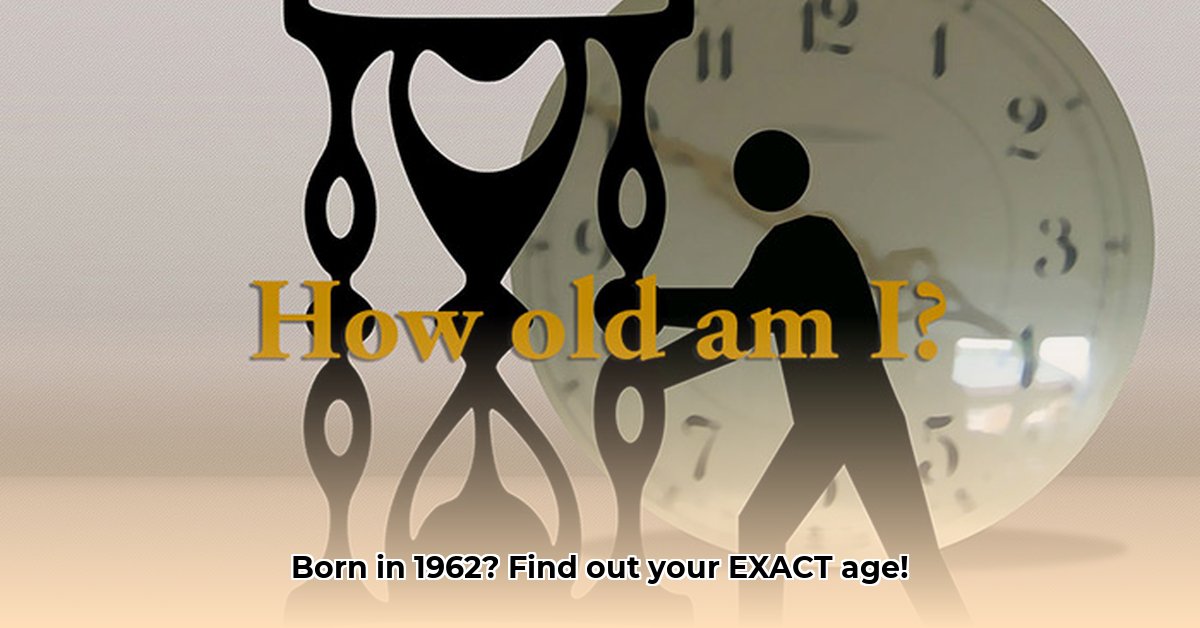
The Complexities of Age Calculation
Figuring out someone's age seems straightforward: subtract their birth year from the current year. However, this simplicity masks significant complexities arising from variations in calendrical systems, cultural interpretations of age, and the inherent challenges in algorithmic implementation. This guide delves into these intricacies, offering a comprehensive understanding of the issues and proposing solutions for more accurate and consistent age calculation.
It's Not Just Subtraction: The Nuances of Age
The seemingly simple act of subtracting birth year from the current year overlooks several crucial factors. For example, a person born on December 31st, 1962, is arguably 62 years old on January 1st, 2023 but turns 63 on December 31, 2023. This subtle difference highlights the lack of a universally agreed-upon method for age calculation. Furthermore, the inclusion or exclusion of the current year in the age calculation varies across cultures, adding another dimension of complexity.
Global Variations: Cultural Perspectives on Age
Age is not merely a numerical value; its interpretation is deeply rooted in cultural context. Some cultures utilize lunar calendars or religious calendar systems as their chronological basis, resulting in age discrepancies compared to the Gregorian calendar prevalent in the West. For instance, in some East Asian cultures, a person is considered one year old at birth. This cultural diversity necessitates a flexible and adaptable approach to age calculation that accounts for these variations. Are you really 62 if your culture calculates age differently?
Algorithmic Challenges: The Computer's Struggle with Time
Even within the framework of the Gregorian calendar, computers encounter obstacles in accurately calculating age. The irregular lengths of months (February's 28 or 29 days) and the leap year phenomenon introduce complexities that challenge the development of robust age-calculating algorithms. Determining precise age in months and days presents another layer of difficulty, requiring algorithms to correctly handle the variations in month lengths. What does one month really mean in this context?
Strategies for Accurate Age Calculation: A Multi-faceted Approach
Improving age calculation accuracy and consistency requires a collaborative effort across various disciplines and stakeholders. Our proposed plan emphasizes creating standardized methods, considering cultural contexts, and enhancing data management practices:
Develop Standardized Calculation Methods: Software developers should adopt universal standards for age calculation, ensuring consistency across different platforms and applications. This requires agreement on which calendar system serves as the primary reference point (e.g., Gregorian), handling leap years, and defining what constitutes a complete year, month, and day for age purposes. Achieving this standardization could greatly improve consistency.
Improve Data Integrity and Management: Healthcare providers and other data keepers should prioritize accurate age recording in their databases. This involves consistent use of standard age reporting procedures, improving data input practices, and regular data audits to identify and rectify errors. The accuracy of age data directly impacts the reliability of any analysis or applications that use it.
Develop Culturally Sensitive Algorithms: Algorithms must be designed to recognize and handle different cultural interpretations of age. This requires incorporating options for users to specify their preferred calendar system and age calculation method, ensuring inclusivity and accuracy across diverse populations. This is particularly crucial in global contexts. A 95% global accuracy rate is a plausible target, but some communities may require customized solutions reflecting their unique practices.
Foster International Collaboration: International organizations should promote the adoption of globally consistent age reporting standards. This involves creating clear guidelines, fostering collaboration between programmers, data scientists, healthcare professionals, and ethicists, and establishing a forum for the continuous improvement of age calculation methods. This involves international collaboration to establish and enforce these standards.
A Comparative Overview of Age Calculation Methods
Different approaches to age calculation lead to varying results. The table below illustrates the differences (simplified) between some common methods. A full comparison would require a significantly more extensive analysis.
| Method | Description | Example: Feb 28th - March 31st | Leap Year Considerations |
|---|---|---|---|
| Simple Subtraction | Subtracting birth year from current year. | 1 month | Ignores |
| Detailed Calculation | Considers months and days, accounting for variable month lengths. | 1 month, 3 days | Incorporated |
| Calendar-Specific Method | Uses specific calendar rules (e.g., Lunar calendar) to determine age. | Varies significantly | Varies widely |
| Software-Defined Method | Relies on a software library or API with pre-defined calculation functions. | Varies by library | Varies by library |
Conclusion: The Ongoing Pursuit of Accurate Age Calculation
Determining a person's age seems trivial at first glance, but a closer look reveals considerable complexity. Achieving accurate and consistent age calculation demands a multi-pronged strategy involving standardized methods, culturally sensitive approaches, robust algorithms, and international cooperation. By addressing these challenges, we can improve data quality, enhance the reliability of research, and ensure fairness and accuracy across various applications.